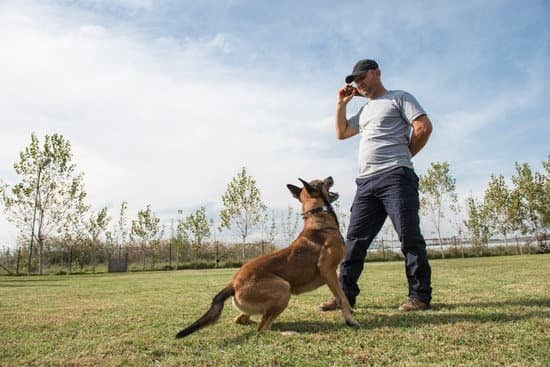Are you wondering how to start with a dog training collar? Understanding the purpose of a dog training collar is essential for successful training. A dog training collar can be a valuable tool when used properly, but it’s important to know how to introduce it to your pet in a safe and effective manner.
Choosing the right type of dog training collar for your pet is crucial. Factors such as your dog’s size, temperament, and specific training needs should all be considered when selecting a collar. Additionally, ensuring that the collar fits properly and comfortably is essential for both effectiveness and your pet’s well-being.
Once you have chosen the appropriate dog training collar, understanding its settings and functions is paramount. Training modes and levels should be adjusted according to your dog’s individual learning style and behavior. Introducing your pet to the collar in a positive manner and building associations with rewards is also key in successful training.
In this article, we will delve into the step-by-step process of starting with a dog training collar. From choosing the right type of collar for your pet to troubleshooting common issues, we’ll cover everything you need to know about using a dog training collar effectively. So, let’s get started on this journey towards successful dog training.
Choosing the Right Type of Dog Training Collar for Your Pet
When it comes to choosing the right type of dog training collar for your pet, there are several factors to consider to ensure that you select the most effective and appropriate option. Here are some key considerations to keep in mind:
- Size and breed of your dog: Different breeds and sizes of dogs may require different types of training collars. For example, a smaller or more sensitive dog may respond better to a vibration collar, while a larger or more stubborn dog may need a static correction collar.
- Training goals: Consider what specific behaviors or commands you want to address with the training collar. If you’re working on basic obedience, a simple remote-controlled collar with tone and vibration options may be sufficient. If you need to work on more advanced training or behavioral issues, a collar with multiple levels of stimulation may be necessary.
- Your dog’s temperament: It’s important to take your dog’s temperament into account when choosing a training collar. Some dogs may be more sensitive or reactive to certain types of stimulation, so it’s crucial to select a collar that will be effective without causing unnecessary stress or discomfort.
Once you have considered these factors, you can then explore the various types of dog training collars available on the market, such as electronic collars, spray collars, vibration collars, and others. Keep in mind that no matter which type of collar you choose, it is essential to always use positive reinforcement techniques in conjunction with the training collar to ensure the best results for your pet.
How to Properly Fit a Dog Training Collar
When it comes to using a dog training collar, proper fit is essential to ensure both comfort and effectiveness for your pet. A well-fitted collar will not only deliver training corrections accurately but also prevent any discomfort or injury to your dog. Here are some important factors to consider when fitting a dog training collar.
Measuring Your Dog’s Neck
Before purchasing a dog training collar, it’s crucial to measure your dog’s neck accurately. Use a soft measuring tape to measure the circumference of your dog’s neck, allowing sufficient room for two fingers between the collar and their skin. This ensures that the collar is not too tight, which could cause discomfort, or too loose, which could result in ineffective training corrections.
Adjusting the Collar Properly
Once you have chosen the right size of the training collar for your pet, it’s important to adjust it properly for a secure fit. Most dog training collars feature adjustable straps that allow you to customize the fit according to your dog’s neck size. Ensure that the prongs or contact points of the collar make direct contact with your dog’s skin without being too tight or causing excessive pressure.
Regularly Checking the Fit
As your dog grows or gains/loses weight, it’s important to regularly check and readjust the fit of their training collar accordingly. A properly fitted collar should remain snug around their neck without causing any irritation or discomfort. Regularly inspecting and maintaining the fit of the collar will ensure its effectiveness during training sessions.
Understanding the Settings and Functions of a Dog Training Collar
When starting with a dog training collar, it is important to have a good understanding of the settings and functions in order to make the training effective and safe for your pet. Dog training collars come with different modes and levels that can be customized to fit your dog’s unique training needs.
Training Modes
Most modern dog training collars offer different modes such as beep, vibration, and shock. The beep mode is typically used as a warning signal, while the vibration mode is often used as a mild form of correction. The shock mode, on the other hand, delivers a small electric stimulation intended to get your dog’s attention. It is important to understand each of these modes and use them appropriately based on your dog’s response.
Training Levels
Dog training collars also come with adjustable levels of intensity for each mode. It is crucial to start at the lowest level and gradually increase it based on your dog’s response. This will help prevent causing unnecessary discomfort or stress to your pet. Understanding how to properly adjust these levels will make the training process more effective and comfortable for your dog.
As a responsible pet owner, it is important to take the time to fully understand the settings and functions of a dog training collar before using it on your pet. This will ensure that you are using the collar in a safe and humane manner, ultimately leading to successful training outcomes for you and your canine companion.
Introducing Your Dog to the Training Collar
When introducing your dog to a training collar, it is essential to create positive associations with the device. This will help your pet feel comfortable with wearing the collar and be more receptive to the training process. Here are some tips for building positive associations with your dog training collar:
1. Gradual Introduction: Start by allowing your dog to get familiar with the training collar without actually activating it. Let them sniff and examine the collar at their own pace, and reward them with treats or praise for showing curiosity or interest.
2. Pairing with Positive Experiences: Associate the training collar with enjoyable activities such as playtime, walks, or mealtime. Put the collar on right before engaging in these activities so that your dog begins to associate it with something they love.
3. Avoiding Negative Reinforcement: It’s important not to use the training collar for correction or punishment during this initial phase. You want your dog to view the collar positively, so refrain from using any corrective functions until they have formed a positive association.
By implementing these strategies, you can help your dog develop a positive attitude towards their training collar, making the overall training process more effective and less stressful for both you and your pet. Remember to be patient and consistent as you work on building these positive associations, as each dog will react differently to this new piece of equipment.
Training Exercises Using a Dog Training Collar
Training your dog using a training collar can be an effective way to teach basic commands and correct unwanted behaviors. One of the most important aspects of this training is to make sure that your dog understands what is expected of them when they feel the sensation from the collar. It’s crucial to start with simple commands, such as “sit,” “stay,” and “come,” before moving on to more complex behaviors.
When using a dog training collar for teaching basic commands, it’s essential to start with the lowest setting possible and gradually increase the intensity only if necessary. As your dog becomes more familiar with the collar, you may find that you need to use it less frequently, as they will respond to verbal commands and hand signals alone.
Another aspect of training exercises using a dog training collar is correcting unwanted behaviors. For example, if your dog jumps up on people or pulls on their leash during walks, the collar can be used as a way to discourage these behaviors. However, it’s important to remember that positive reinforcement should always be combined with corrective actions in order to create a balanced training approach.
| Training Exercise | Description |
|---|---|
| Teaching Sit Command | Start with the lowest setting on the collar and give the verbal command “sit.” If your dog does not comply, gently press the button while giving the command again. Release the stimulation as soon as your dog sits. |
| Correcting Leash Pulling | If your dog starts pulling on their leash during a walk, use a quick stimulation until they stop pulling. Then reward them for walking nicely beside you. |
| Recall Training | If your dog ignores your recall command, use a stimulation while saying “come.” When they return to you, reward them with praise and treats. |
Maintaining and Caring for Your Dog Training Collar
Proper maintenance and care for your dog training collar is essential in ensuring its longevity and effectiveness. Cleaning the collar regularly will not only keep it in good condition but also prevent any skin irritation for your pet. It is important to follow the manufacturer’s guidelines for cleaning, as each type of training collar may have different requirements.
Most standard collars can be cleaned with a damp cloth or sponge using mild soap. Be sure to remove any excess dirt or grime that may have accumulated on the collar, especially on the contact points that come into direct contact with your pet’s skin. For more advanced electronic collars, make sure to remove the receiver from the collar before cleaning and avoid submerging it in water.
When it comes to storage, it is best to keep your dog training collar in a cool, dry place when not in use. Avoid exposing it to extreme temperatures or direct sunlight, as this can damage the materials and affect its functionality. Storing it properly will prevent any unnecessary wear and tear, ultimately prolonging the life of your training collar.
Understanding how to properly maintain and care for your dog training collar is crucial in ensuring its effectiveness when used on your pet. Following these simple cleaning and storage tips will keep your training collar in optimal condition, allowing you to continue using it for years to come.
| Collar Maintenance | Cleaning Tips |
|---|---|
| Regular cleaning prevents skin irritation | Use a damp cloth or sponge with mild soap |
| Follow manufacturer’s guidelines | Avoid submerging electronic collars in water |
| Storage considerations | Keep collar in a cool, dry place away from extreme temperatures |
Troubleshooting Common Issues With Dog Training Collars
While dog training collars can be an effective tool in teaching your pet, there are some common issues that may arise during the training process. It’s important to address these issues promptly to ensure success and to maintain a positive relationship with your dog. One of the most common problems that pet owners encounter is with the fit of the collar.
If the collar is too loose or too tight, it can cause discomfort and ineffective training. Ensure that you properly fit the collar according to the manufacturer’s instructions, and regularly check for any signs of rubbing or irritation on your dog’s skin.
Another issue that may arise is related to the settings and functions of the training collar. It’s essential to understand how each training mode works and what level of stimulation is appropriate for your dog.
Failure to properly adjust these settings can result in either under – or over-stimulation, both of which can have negative effects on your pet’s behavior and well-being. Take the time to familiarize yourself with the functions of the collar, and consult a professional if you are unsure about how to use it effectively.
Additionally, it’s crucial to consider environmental factors that could impact the effectiveness of your dog training collar. For example, if you’re using a shock collar outdoors, interference from other electronic devices or even natural sources such as metal fences can disrupt its signal.
Be mindful of these external elements and adjust your training accordingly. By troubleshooting and addressing these common issues, you can ensure that your dog training collar is a valuable tool in shaping your pet’s behavior positively.
Conclusion
In conclusion, starting with a dog training collar can be an effective tool in teaching your pet obedience and good behavior. It is important to remember that positive reinforcement and patience are key elements in the training process. By using a dog training collar properly, you can create a strong bond with your pet while also ensuring their safety and well-being.
When introducing your dog to the training collar, it is crucial to build positive associations. This will help your pet feel comfortable and at ease with the new device. Additionally, taking the time to properly fit the collar and understand its settings and functions will ensure that it is both effective and comfortable for your dog.
As you begin training exercises using the dog training collar, remember to focus on teaching basic commands and corrections in a calm and consistent manner. And finally, by maintaining and caring for your dog training collar, you can prolong its lifespan and effectiveness. With dedication and the use of positive reinforcement, you can successfully train your beloved pet using a dog training collar.
Frequently Asked Questions
When Should You Start Using a Training Collar on a Dog?
It is recommended to start using a training collar on a dog once they have learned basic obedience commands and have a good understanding of walking on a leash. This usually occurs around 6 months of age, but it can vary depending on the individual dog’s maturity and behavior.
It’s important for the dog to have a strong foundation in positive reinforcement training before introducing a training collar.
How Do You Put a Collar on a Dog for the First Time?
When putting a collar on a dog for the first time, it’s important to do so in a calm and gentle manner. Start by allowing the dog to sniff and investigate the collar before attempting to put it on. Use plenty of praise and treats to create positive associations with the collar.
Slowly introduce the collar around the neck, making sure it is snug but not too tight. Avoid pulling or tugging at the collar, and continue to offer rewards for good behavior during this process.
Do Vets Recommend Shock Collars?
Many vets do not recommend shock collars as they can cause physical and psychological harm to dogs. Instead, vets typically encourage positive reinforcement training methods that focus on rewarding good behavior rather than punishing bad behavior.
These methods are more effective in creating long-term behavioral changes in dogs without causing them unnecessary distress or discomfort. It’s important for pet owners to consult with their vet about safe and humane training methods for their dogs.

Welcome to the blog! I am a professional dog trainer and have been working with dogs for many years. In this blog, I will be discussing various topics related to dog training, including tips, tricks, and advice. I hope you find this information helpful and informative. Thanks for reading!





